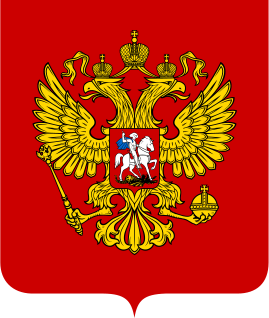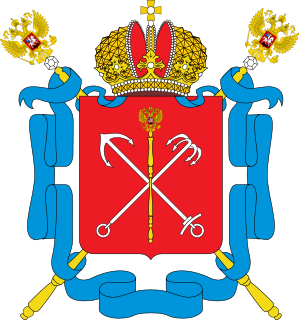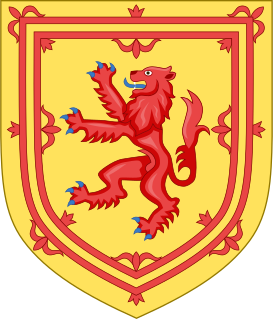 W
WThe coat of arms of Andorra is the heraldic device consisting of a shield divided quarterly by the arms of the Bishop of Urgell and the Count of Foix – who have historically been the two co-princes of Andorra – in addition to the emblems of Catalonia and the Viscount of Béarn. Utilized unofficially since the Middle Ages, its status as the coat of arms of the Principality of Andorra was formalized in 1993 upon the implementation of their new constitution. The escutcheon is featured on the flag of Andorra.
 W
WThe coat of arms of the City of Canberra, also known as Armorial Bearings of the City of Canberra, was granted to Federal Capital Commission, its successors and the City of Canberra by King George V in 1928. It has been used by the Australian Capital Territory as its de facto coat of arms, as the territory does not have its own coat of arms. A modified version of this coat of arms also appears on the flag of the Australian Capital Territory since 1993.
 W
WThe coat of arms of Bucharest is the heraldic symbol of the capital city of Romania. The present-day coat of arms was adopted by Domnitor Alexandru Ioan Cuza, and changed under the Communist regime. In 1994, it was renewed again with minor alterations.
 W
WMide or Meath, a medieval Irish province, is sometimes represented by a coat of arms comprising a monarch "in majesty": that is, seated on a throne on a field of azure (blue). The arms of Mide appear alongside those of the four modern provinces on a 1651 map of Galway. The arms reflect the fact that Tara, the seat of the High King of Ireland, was in Mide. This symbolism is derived from iconography rather than classical heraldry; mediaeval royal seals portrayed a majesty on the obverse and the arms of the sovereign on the reverse. The sceptre, here shown to have six oval nodules, represented power, and the outstretched right hand justice; both of these were royal prerogatives. The old province of Meath is nearly coextensive with the present-day Diocese of Meath. The arms of Meath were apparently used at one time as the arms of Ireland, but with the majesty on a field of sable (black) instead of azure.
 W
WThe coat of arms of Miskolc, Hungary was created in 1909 based on the mediaeval seals of the city.
 W
WThe coat of arms of Moldova is the national emblem of the Republic of Moldova.
 W
WThe coat of arms of Montenegro was officially adopted by the law passed in the Parliament on 12 July 2004. It is now the central motif of the flag of Montenegro, as well as the coat of arms of the Army of Montenegro. It was constitutionally sanctioned by the Constitution proclaimed on 2 October 2007.
 W
WThe coat of arms of Romania was adopted in the Romanian Parliament on 10 September 1992 as a representative coat of arms for Romania. It is based on the Lesser Coat of Arms of the Kingdom of Romania, redesigned by Victor Dima. As a central element, it shows a golden aquila holding a cross in its beak, and a mace and a sword in its claws. It also consists of the three colors which represent the colors of the national flag. The coat of arms was augmented on 11 July 2016 to add a representation of the Steel Crown of Romania.
 W
WThe coat of arms of Russia derives from the earlier coat of arms of the Russian Empire which was abolished with the Russian Revolution in 1917. Though modified more than once since the reign of Ivan III (1462–1505), the current coat of arms is directly derived from its medieval original, with the double-headed eagle having Byzantine and earlier antecedents. The general tincture corresponds to the early fifteenth-century standard.
 W
WThe coat of arms of Saint Petersburg is the official symbol of the city and was adopted in 23 April 2003.
 W
WThe royal arms of Scotland is the official coat of arms of the King of Scots first adopted in the 12th century. With the Union of the Crowns in 1603, James VI inherited the thrones of England and Ireland and thus his arms in Scotland were now quartered with the arms of England with an additional quarter for Ireland also added. Though the kingdoms of England and Scotland would share the same monarch, the distinction in heraldry used in both kingdoms was maintained. When the kingdoms of Scotland and England were united under the Acts of Union 1707 to form the Kingdom of Great Britain, no single arms were created, thereby maintaining the convention that the royal arms used in Scotland would continue to differ from those used elsewhere.
 W
WZazpiak Bat is a heraldic nickname for the Basque coat of arms which includes the arms of the seven provinces mentioned, stressing their unity. It was designed by the historian Jean de Jaurgain in 1897 for the Congrès et Fêtes de la Tradition basque celebrated at Saint-Jean-de-Luz.